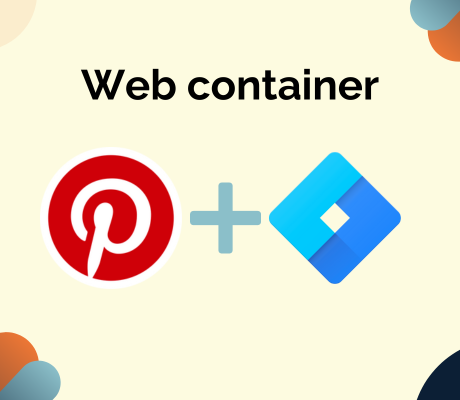Pinterest Server Side Tracking is a way to measure the performance of your ad campaigns without your data being affected by browser restrictions or privacy tools. Instead of placing trackingpixels and cookies directly in your visitors’ browsers (known as client-side tracking), Server Side Tracking sends the data to your own server first.
This means you have more control over the data you share with Pinterest. For example, you can choose to share only certain data, or to anonymize the data. In addition, you are better protected from ad blockers.
Server Side Tracking can also improve the performance of your ad campaigns. Because the data is not affected by browser limitations, you can collect more accurate statistics. This can help you optimize your campaigns to get more results.

Third-party cookies are a powerful tool for marketers, but they are also a privacy concern for Internet users. More and more browsers, software and smartphones are putting the block on third-party cookies. By 2024, all major players will ban these cookies.
Not to worry, there is an alternative: Server side tracking. Server side tracking allows you to keep your tracking 100% accurate, even without using third-party cookies. With server side tracking, the tracking data is not saved in the user's browser, but on the marketer's server. This makes it more difficult for the user to block tracking.
Closer conversion tracking is essential for successful Pinterest campaigns. Unfortunately, 10-30% of the data is already missed by blocking third-party cookies. This is a problem because platforms such as Google and Facebook rely heavily on algorithms and data. The more marketing data you send to these platforms, the better your results can be.
Server side tracking is also important for enriching your data. The Server Container acts as an HTTP API endpoint, allowing you to send data from a variety of sources to Google Tag Manager, such as your CRM data. This way, you can get additional user data into GTM and co-send it to the ad platforms.
Result ⇾ More conversions in your campaigns.
Server side tracking is a powerful tool that helps comply with General Data Protection Regulation (GDPR) legislation. This legislation requires organizations to respect their customers' privacy and protect their personal information. TAGGRS, a Server Side Tracking solution, makes this process easier and more effective.
Server Side Tracking via TAGGRS gives you complete control over what data you share with what software. You can even filter out specific personal data from the tracking, which is a big advantage in terms of privacy protection. TAGGRS has servers around the world, allowing the data to be saved within EU borders, which is also GDPR compliant.
So with Server Side Tracking through TAGGRS, you can ensure that you are GDPR compliant while still collecting and using valuable data to improve your online marketing efforts. You can offer your customers the privacy they deserve while making effective use of the data you collect.
Little known fact: When you include parameters in the URL, for example UTM tags, the cookie's lifetime is limited to 1 day in Firefox and Safari!
Server Side Tracking extends this cookie lifetime, ensuring that all conversions are attributed to the correct source.
This is the first step, because you need a server container to manage your server side tags. A server container allows you to place tags on your website without having to change your website's code. It allows you to Administer tags from one central location. We have written a blog of how to set up a good basic setup in 7 steps so you can get started with server side tracking.


The Pinterest Tag allows you to track actions people take on your website. These valuable insights not only help you measure campaign performance, but also optimize your spend and create specific audiences to target on Pinterest. It is the key to understanding visitors' behavior after they see your promoted Pin.
The Pinterest Conversion API is an advanced solution that allows advertisers to measure and fine-tune conversions on their websites. Instead of leaning on traditional trackingpixels, this API sends web event data directly from the advertiser's server to Pinterest.


Ensure optimal tracking accuracy with Pinterest Event Deduplication. This prevents duplicate conversion counts and guarantees a more reliable representation of your conversion data. The result? Pure data that lets you make informed decisions and optimize your Pinterest ad results.
Test your settings: Be sure to test your tracking settings to make sure everything is working correctly. This is a crucial step to ensure that you don't have problems with your tracking later.
Start using Pinterest Server Side Tracking and generate more sales and conversions in a world without third-party cookies.
TAGGRS
Copyright 2024, TAGGRS.
All rights reserved.